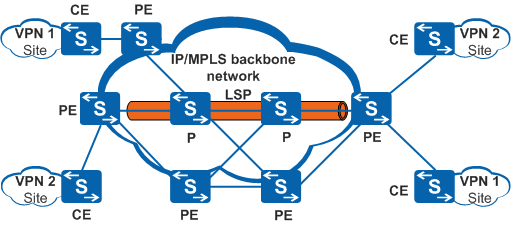Overview of Static LSPs
Static LSPs are manually set up by an administrator and apply to networks with simple and stable network topologies. They cannot be set up using a label distribution protocol.
As shown in Figure 1, the path through which IP packets are transmitted on an MPLS network is called label switched path (LSP). An LSP can be manually configured or established using label distribution protocols.
Generally, MPLS uses the Label Distribution Protocol (LDP) to set up LSPs. LDP uses routing information to set up LSPs. If LDP does not work properly, MPLS traffic may be lost. Static LSPs are configured to determine the transmission path of some key data or important services.
A static LSP is set up without using any label distribution protocol to exchange control packets, so the static LSP consumes few resources. However, a static LSP cannot vary with the network topology dynamically, and must be adjusted by an administrator according to the network topology. The static LSP applies to networks with simple and stable network topologies.
When configuring a static LSP, the administrator needs to manually allocate labels for each Label Switching Router (LSR) in compliance with the following rule: the value of the outgoing label of the previous node is equal to the value of the incoming label of the next node.
In Figure 1, a static LSP is set up on the backbone network so that L2VPN or L3VPN services can be easily deployed.
